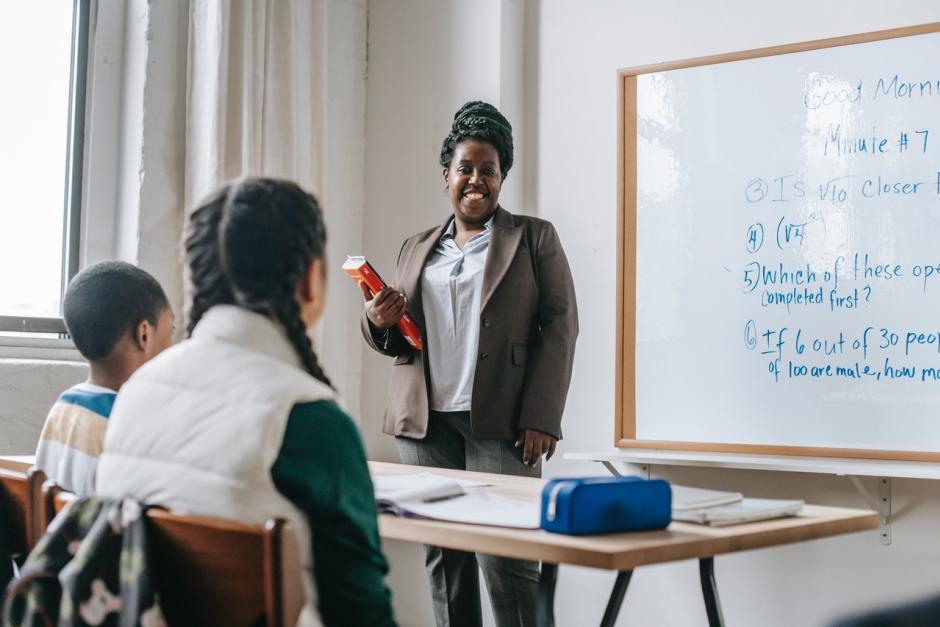Attending primary school is a huge step in the life of your child. For a parent, it can feel like saying goodbye to your baby (don’t worry they’ll still need kids toys, a car seat and regular cuddles), but for kids, it’s a whole new chapter in life. So it’s a decision you want to get right. But with competition over places and an often unclear application process, applying to primary schools can be a source of stress.
Our guide to applying for primary school should hopefully help take the confusion and stress out of the process. We’ll explain when to apply to primary school, how to apply, and what happens if you don’t get the school you want.
Please note, all the information here is for applying to state primary schools. Applications to private primary schools are made directly to the school.
What age do children go to primary school in the UK?
Most children in the UK start primary school the September after their fourth birthday. This means they start school when they’re four and turn five during their first school year (or that summer after the school year has ended).
If children start primary school during their fourth year, they go into a Reception class. Children can start later however, as your child doesn’t have to legally be in primary education until they reach the compulsory school age.
What is the compulsory school age for primary school in the UK?
The compulsory age for primary school in the UK is five. Your child will be deemed to be of compulsory school age on the 1st January, 1st April or 1st September after their fifth birthday. So, if they are five between 31st January and 31st March, they’ll be of compulsory age at the beginning of the term after 1st April. However, you’ll still need to apply for a primary school place at the same time as everyone else.
What other options does my child have for starting primary school?
All children grow and develop at different speeds. You may feel your child is not ready for full-time primary school in the September after their fourth birthday. If this is the case, you have the following options:
1. Start your child in September, but ask the school if they can start part-time
2. Start your child midway through the year, but before the compulsory school age
3. Wait until the compulsory school age
When to apply for primary school?
Whether you want your child to start in September, or start later in the year, you should apply for primary school at the same time. The exact timings of when you can apply for primary schools will vary by council. Most councils will have a cut-off date during January of the year you want your child to start primary school. Usually, this cut-off point is around the 15th of January.
For instance, if you want your child to start primary school in September 2024, you’ll need to apply before the cut-off date in January 2024. Late applications will still be considered, but after on-time applications, meaning your chances won’t be as good for getting a place at a preferred school.
When are primary school places announced?
Primary school places are confirmed on Primary Schools National Offer Day in April. Usually, this date is a Monday in the middle of April. It will change from year-to-year, but it will be close to the 15th.
On the day, your local council will send you a letter confirming which primary school your child will attend.
How to apply for primary school?
You apply to primary schools through your local council, and by the following process:
Step 1: Know your council
To make sure you know which council you live in, use the Gov.uk website to find out which council you belong to. Simply enter your postcode and click the green Find button. You can then click a link to go to your council’s school application website.
Step 2: Find your catchment area school
A catchment area is an area around a school that people live in. You’ll most likely live in the catchment area of one primary school. This is probably the nearest primary school to you but isn’t always. Sometimes people live on the edge of a catchment area of a slightly more distant primary school.
To find your catchment school, first enter your postcode in the Gov.uk website to find your council. Click through to your council’s website, then enter your house number and postcode to find your catchment area school.
Step 3: Research other local primary schools
You don’t have to send your child to the catchment school. You can usually apply to between three and six primary schools, depending on your council.
Research other local primary schools in your area. Look at Ofsted Inspection Reports, ask other parents who have children in primary school, and read online forums and reviews. Make sure you visit all the primary schools you’re interested in by going to an open day or a tour.
Step 4: Apply online
Apply online via your local council’s school application website. You can also apply on paper, but you’ll need to download the form from your local council’s website.
You’ll be asked to select more than one primary school, in preference order. Usually at least three schools, and up to a maximum of four to six. You can also give your reasons for selecting the schools you’ve chosen. Include as much relevant information as possible.
How are primary school places decided?
If the primary school you’ve listed as your first choice has places, your application will be automatically accepted, and your child will attend that school.
If the primary schools you’ve applied to are over-subscribed, your local council will accept some applications and will reject others for each school. The process varies by council, but councils usually give priority to applications if:
§ You live in the catchment area for that primary school
§ You don’t live in the catchment area but otherwise live close to the school
§ You already have an older child at that school
§ You child has specific needs that make it essential they attend the school
§ Your application is based on religious beliefs
Can I appeal the primary school my child is allocated?
If the schools you’ve applied to are over-subscribed, you may not be given your preferences. Your child may be allocated to a lower choice primary school, or even to a primary school you’ve not selected.
If this happens, and you’re not happy with the allocated school, what should you do? The following steps are recommended:
Accept the place: As a first step, it’s sensible to accept the place, just as a back-up.
Put your child on a waiting list: Primary schools have waiting lists for at least the first term of the year. Ask your council to put your child on the waiting lists for the schools you prefer, in case children drop out of those schools and places become available.
Appeal: Your council will have an appeal process too. If you feel a mistake has been made or that you have been dealt with unfairly, you can use the appeal process to challenge the decision.
If in doubt, check with your council
The information here is for primary school applications in England. The majority of it will be applicable to primary school applications in Wales, Scotland and Northern Ireland, but you may find some differences. Check with your local council’s primary school application process to make sure you have all the key dates and steps covered. If you have any other questions, the best place to start is with your local council.
Sources:
https://www.gov.uk/schools-admissions/how-to-apply
https://www.gov.uk/schools-admissions/school-starting-age
https://www.bbc.co.uk/bitesize/articles/z4tst39
https://mummy2twindividuals.com/applying-for-primary-school-place
https://www.locrating.com/Blog/not-got-the-school-you-wanted.aspx



Leave a Comment: